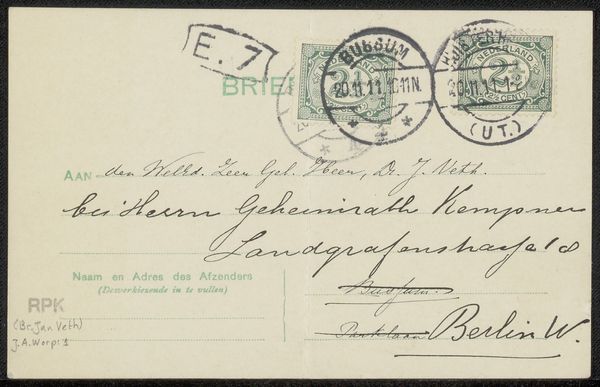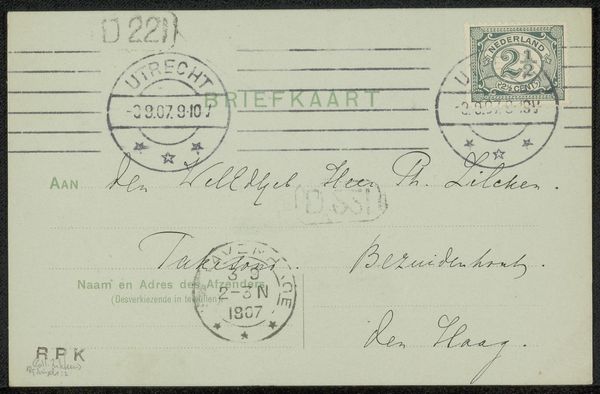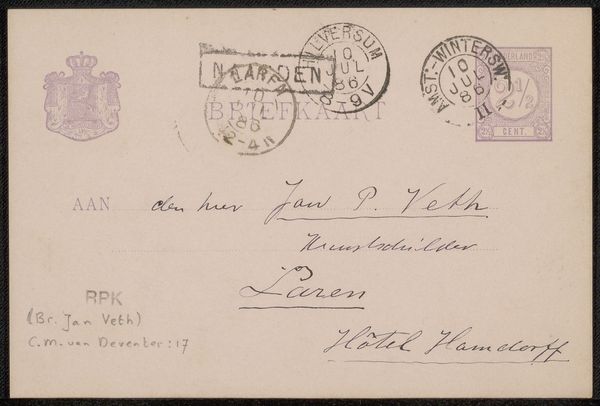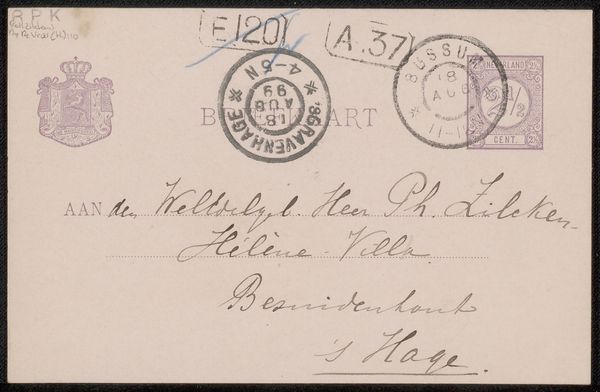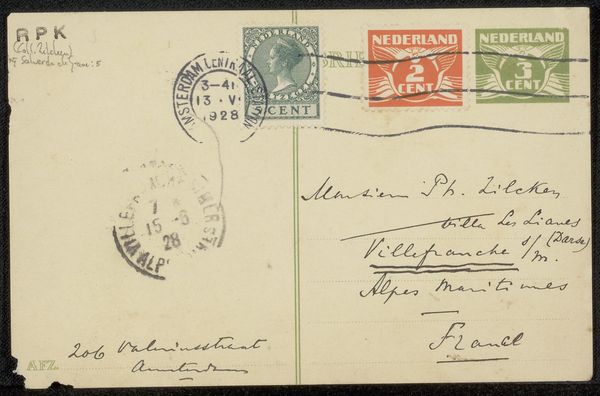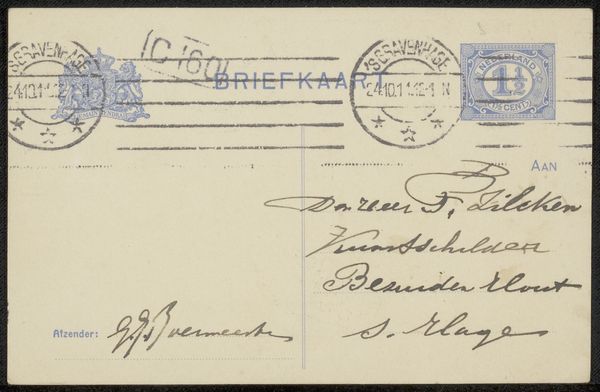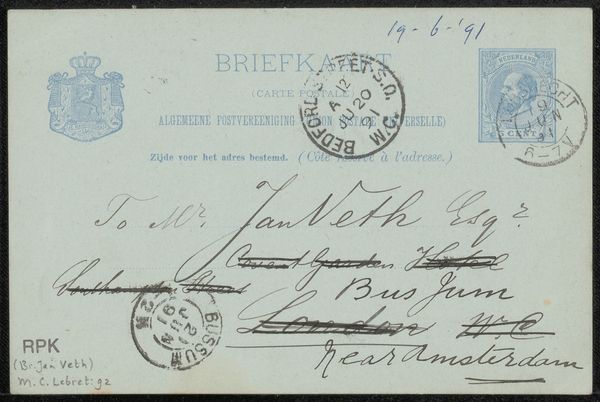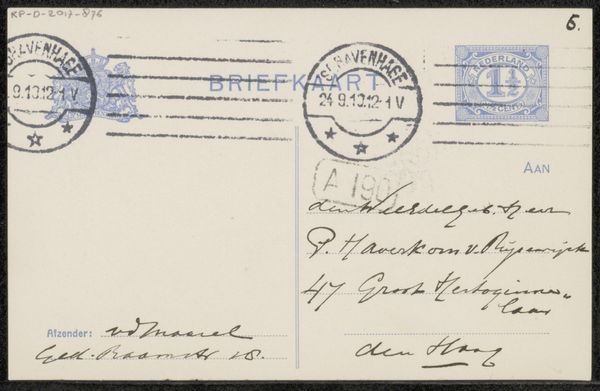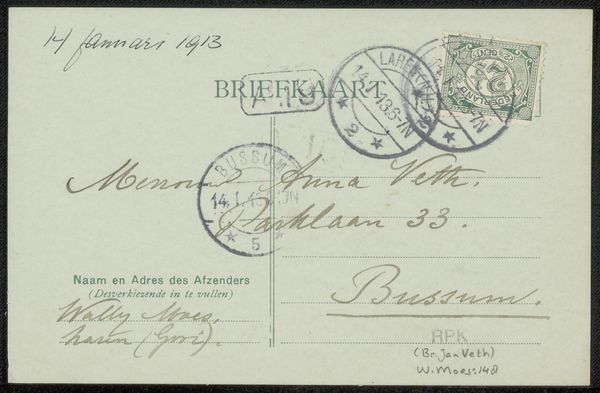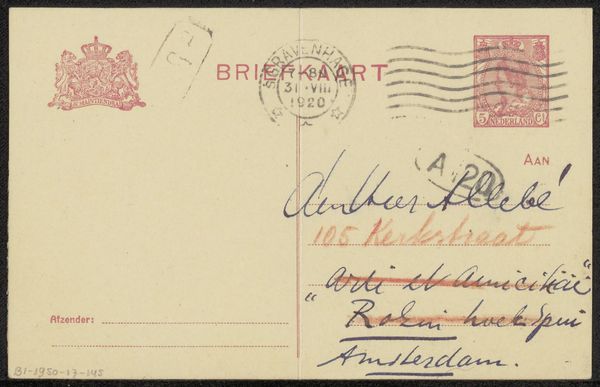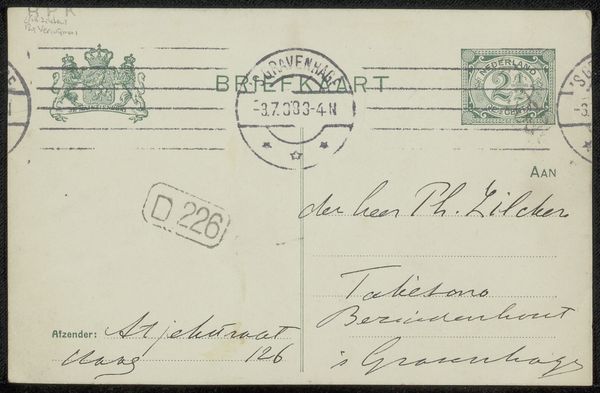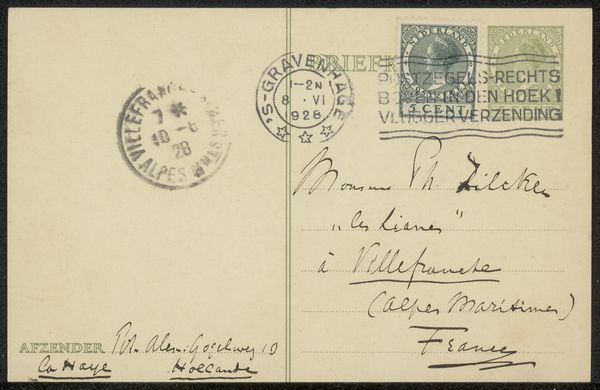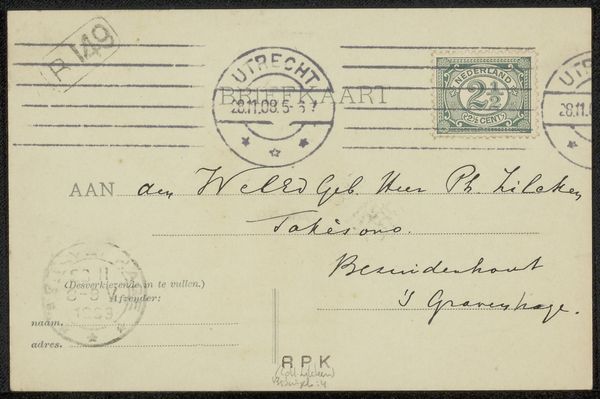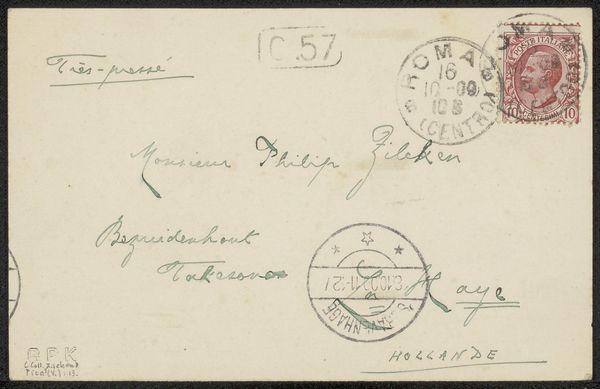
drawing, paper, ink
#
drawing
#
comic strip sketch
#
pen drawing
#
pen illustration
#
pen sketch
#
paper
#
personal sketchbook
#
ink
#
ink drawing experimentation
#
pen-ink sketch
#
pen work
#
sketchbook drawing
#
sketchbook art
Copyright: Rijks Museum: Open Domain
Curator: What strikes me immediately about this postcard is the frankness of its materiality. It’s all laid bare. Editor: Indeed. We’re looking at “Briefkaart aan Jan Veth,” possibly from 1911 to 1917, a drawing by André Jolles, created with ink on paper. The reversed image presents an intimate view, doesn’t it? We see the artist's actual correspondence. Curator: Exactly. The stamps, the handwriting – they present a sort of accidental collage, where the function overrides artistic intention, perhaps? The composition is dictated by postal needs, with that wonderful handwritten address. Yet it holds visual appeal because the script has a formal quality. Editor: It gives us a tangible connection to the early 20th century. The address details locate Jan Veth in Bussum, Netherlands, seemingly "bei Frau Commerzienrath Oetker." Who were these people? The everyday context provides a compelling narrative of artistic communication through established channels. The politics inherent to its format—postage rates and location. It underscores the importance of these figures in the broader cultural dialogue. Curator: I'm struck by the balance the handwriting gives the entire image, visually anchoring and providing that weight despite the small stamps in the upper right corner of the image. Note that the postmarks interrupt its legibility, blurring those words of intended communication into abstract shapes, thereby adding an unconscious element of painterly dynamism. Editor: I appreciate that Jolles chose this common medium. It speaks to the democratic nature of art and artistic exchange at the time. It brings it down to earth. Postcards weren’t precious objects. It suggests a community fostered by artistic exchange that challenges hierarchical presumptions, or even now assumptions about art from this era being overtly grandiose or political in a public sense. Curator: I’m left contemplating how mundane objects can inadvertently transform into meaningful historical records and artistic compositions, capturing glimpses of human interaction and connection, but now from a new angle. Editor: This artwork's format pushes us to question how everyday correspondence transcends the ephemeral. We have insight now through visuality as an art.
Comments
No comments
Be the first to comment and join the conversation on the ultimate creative platform.
